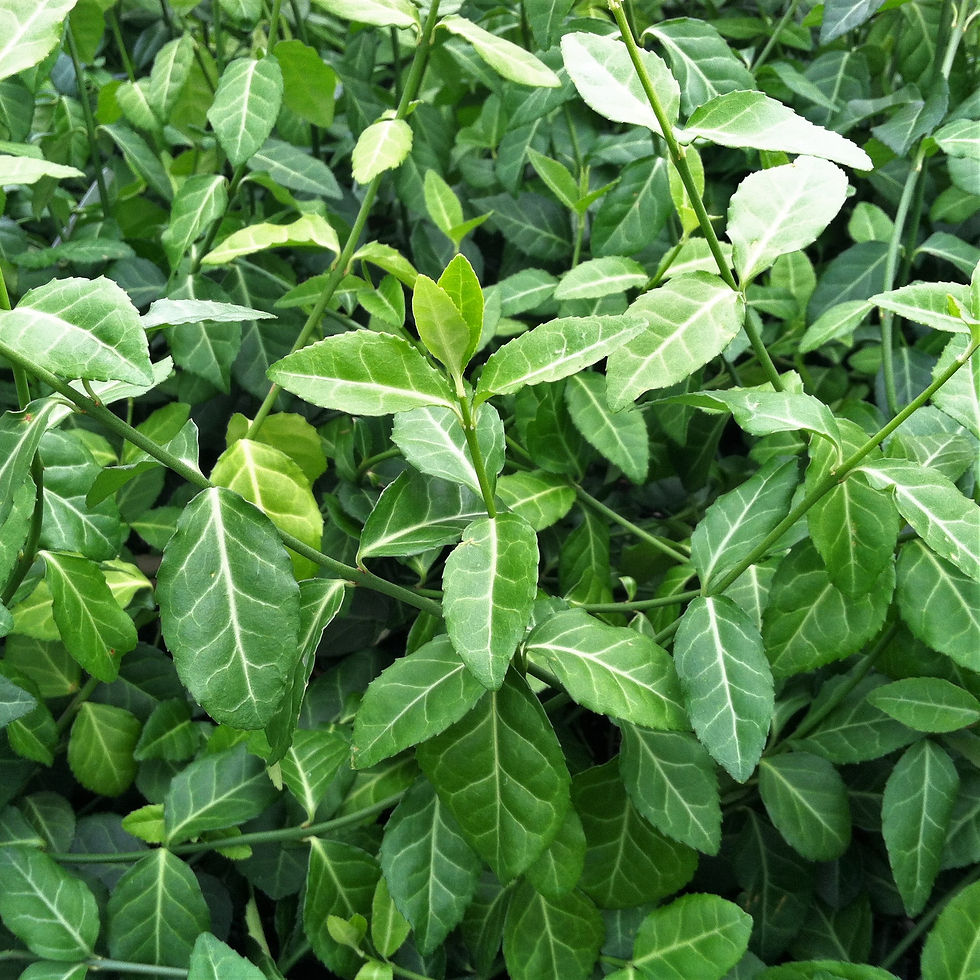WINTERCREEPER
- Bill N. McKnight
- Feb 1, 2021
- 3 min read
Updated: Feb 26, 2021

What comes to mind when I think of or see wintercreeper (Euonymus fortunei)? -- appealing, evergreen, groundcover, horrible, invasive, tenacious, climbing, shrublike vine, prone to scale infestation. This ubiquitous naturalizing exotic species is all of these, and the assessment includes the many hybrids and cultivars, some of which are irresistible.
Wintercreeper is also fast-growing and extremely difficult to eradicate. Forget herbicides, this woody monster usually must be dealt with mechanically (i.e., manual extraction). Removal is an extreme laborious process especially in heavily infested areas. I give the following advice. If at all possible, avoid it. Already got it? Prevent establishment and spread. If you have an area being overwhelmed, follow these steps. (1) Since the main stem can get 4-5-inches thick, keep it from climbing as it will deface bark and building as well as ruin a fence, and it reproduces by seed once it goes vertical. The attractive fruit, which wildlife help disperse, is part of the problem. (2) DO NOT start the removal from within the infected area. Instead, start at the perimeter. Pulling the new scouting leaders is relatively easy as they will have limited roots. Action 1&2 prevent further spread (i.e., taking new territory). (3) Attack the now confined population aggressively -- divide and conquer. This is the hard part as it will require some dealing with roots. I consider 100 sq ft a good day's work, especially in areas where it has been mowed -- a deeper, dense and tenacious root system develops which is a nightmare to eliminate. Burn or otherwise destroy the extracted material. If left in piles some pieces may reroot. Know that you WILL NOT get all of it the first time through. Removal is NOT a once and done action. It will be necessary to continue periodically looking for and removing any missed or new specimens. I used process above for good reason. I find the best time of year to do the removal is November - March, when the ground is not frozen or snow covered. An "evergreen," wintercreeper is also easier to spot in late fall and winter. The rich green invader is darker and slightly bronzed in winter. The young plants often turn a reddish in winter. Because of fallen leaves, it usually will be most obvious in wooded areas at the base of trees and climbing trunks. You may be shocked at the scope of the problem.
For decades individuals and have sought, landscapers and developers have recommended, and garden centers have provided this ornamental even though we have long known about its sinister reproductive potential. Many people were/are more concerned with getting something they wanted, good idea or not, than they were about environmental stewardship. Oh, look at that pretty! Consequently, they released an invader that likes the Midwest and readily reproduces both sexually and asexually. The gift that keeps on giving with the potential to destroy a forest. In Chapter 96 (The Worst of the Worst) I designated wintercreeper as a top three to be avoided plants in the Midwest, along with Asian bush honeysuckle and Callery pear.
Fortunately, all forms of wintercreeper are now illegal to sell, give away or plant in Indiana, although I occasionally still see this omnipresent marauder offered for sale at garden centers. While we often cannot legislate ourselves into compliance (think 18th Amendment and Prohibition) occasionally it is necessary to try. If you see someone selling this "bad" plant, contact the DNR at 866-NO-EXOTIC or email depp@dnr.in.gov. Sadly, Pandora's box was opened many years earlier -- the legislation was enacted too late. Wintercreeper is here to stay, and that IS NOT good for our landscape. Wintercreeper smothers wildflowers and decimates woodlands, and the situation is getting worse. While we will never completely get rid of it, we can and should attempt to eradicate where we can, and limit the spread. Hear me: no GOOD gardener has or tolerates wintercreeper.
Comments